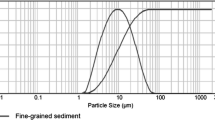Abstract
Vegetation in closed water area improves the natural environment by providing a habitat for juvenile shellfish and fish and by facilitating the intake of nutrients by plants. For these aquatic fauna, nutrient discharge occurs as mature individuals are harvested as fishery resources. However, aquatic plants are not typically harvested, so nutrients taken up by the plants as they grow return to the water in dead vegetation. These plants will not make a sustained contribution to the purification of the overall aquatic environment unless a system is developed to harvest them. In this research, we examine how reeds can be recycled. A potential application for the reeds is in mineral/chemical concrete admixtures. Reeds are rich in inorganic silica and organic lignin, both of which are effective as concrete admixtures. Silica is typically amorphous and is used as a pozzolanic admixture to impart long-term strength to concrete. Lignin is used as a water reducer admixture, which reduces concrete water content or slows the setting rate. The silica and lignin contained in the reed were examined from the viewpoint of strength development and flow of concrete. From the viewpoint of strength development, it was confirmed that long-term strength can be expected by replacing ashes of reeds with 5% of cement. Then, to improve mortar flow, reed powder was added to mortar as a water reducer at a weight fraction of 1% and was suitable in terms of phenol concentration. The results indicate that reed can be used as a chemical and physical concrete admixture.













Similar content being viewed by others
References
Harada K, Ohya K, Matsui K (1993) Fundamental properties of mortar blended with rice husk ash. Proc Jpn Concr Inst 15:327–332
Hyodo M, Yoshii R, Ogata H (2015) A fundamental study on identification of chemical composition in reed ash and its use as concrete mixture materials. Trans Jpn Soc Irrig Drain Rural Eng 298:83–88
Ishiguro S (2000) Strength characteristics of mortar containing rice husk ash cement. Trans Jpn Soc Irrig Drain Rural Eng 210:83–88
Kajiwara N, Uehara T, Saito K, Higuchi Y (2009) A study on composition design of concrete containing rice husk ash emitted from thermal power stations. Cem Sci Concr Technol 63:554–561
Katahira H, Kouno H (2002) Evaluation method of durability of concrete focused on short-time water absorption of diameter core Examination. Proc Jpn Concr Inst 24:1599–1604
Kurata R (1994) Natural purification mechanism in Lake Biwa endohedral lakes. J Jpn Soc Water Environ 17:154–157
Nishida A, Saito T, Demura K, Gakiya M (2017) Effect of glass transition temperature of emulsion and curing method on flexural properties of emulsion treated bamboo-reinforced cement mortars. Cem Sci Concr Technol 71:618–625
Ogata H, Hattori K, Takada R (2006) Fundamental properties of concrete blended with granulated rice husk ash. Proc Jpn Concr Inst 28:1379–1384
Pagter M, Bragato C, Malagoil M, Brix H (2009) Osmotic and ionic effects of NaCl and Na2SO4 salinity on Phragmites australis. Aquat Bot 90:43–51
Sakai E (2012) Calorimetry and performance of cement and concrete. Jpn Soc Calorim Therm Anal Netsu Sokutei 39:15–21
Sakoi Y (2012) Review on Application of Rice-Husk Ash (RHA) as Mineral Admixture of Concrete. Concr J 50:628–633
Schaller J, Brackhage C, Paasch S, Brunner E, Baucker E, Dudel EG (2013) Silica uptake from nanoparticles and silica condensation state in different tissues of Phragmites australis. Sci Total Environ 442:6–9
Tsukioka T, Takayama Y (1997) A study on characteristics of concrete blended with rice husk ash. Proc Jpn Concr Inst 19:301–306
Acknowledgements
This work was supported by JSPS KAKENHI Grant No. JP18H02299 (Grant-in-Aid for Scientific Research (B); representative: Dr. H. Ogata).
Author information
Authors and Affiliations
Corresponding author
Rights and permissions
About this article
Cite this article
Hyodo, M., Shibahara, S. & Ogata, H. Influence of organic components and inorganic components of reed as a concrete admixture. Paddy Water Environ 17, 411–417 (2019). https://doi.org/10.1007/s10333-019-00736-z
Received:
Revised:
Accepted:
Published:
Issue Date:
DOI: https://doi.org/10.1007/s10333-019-00736-z




